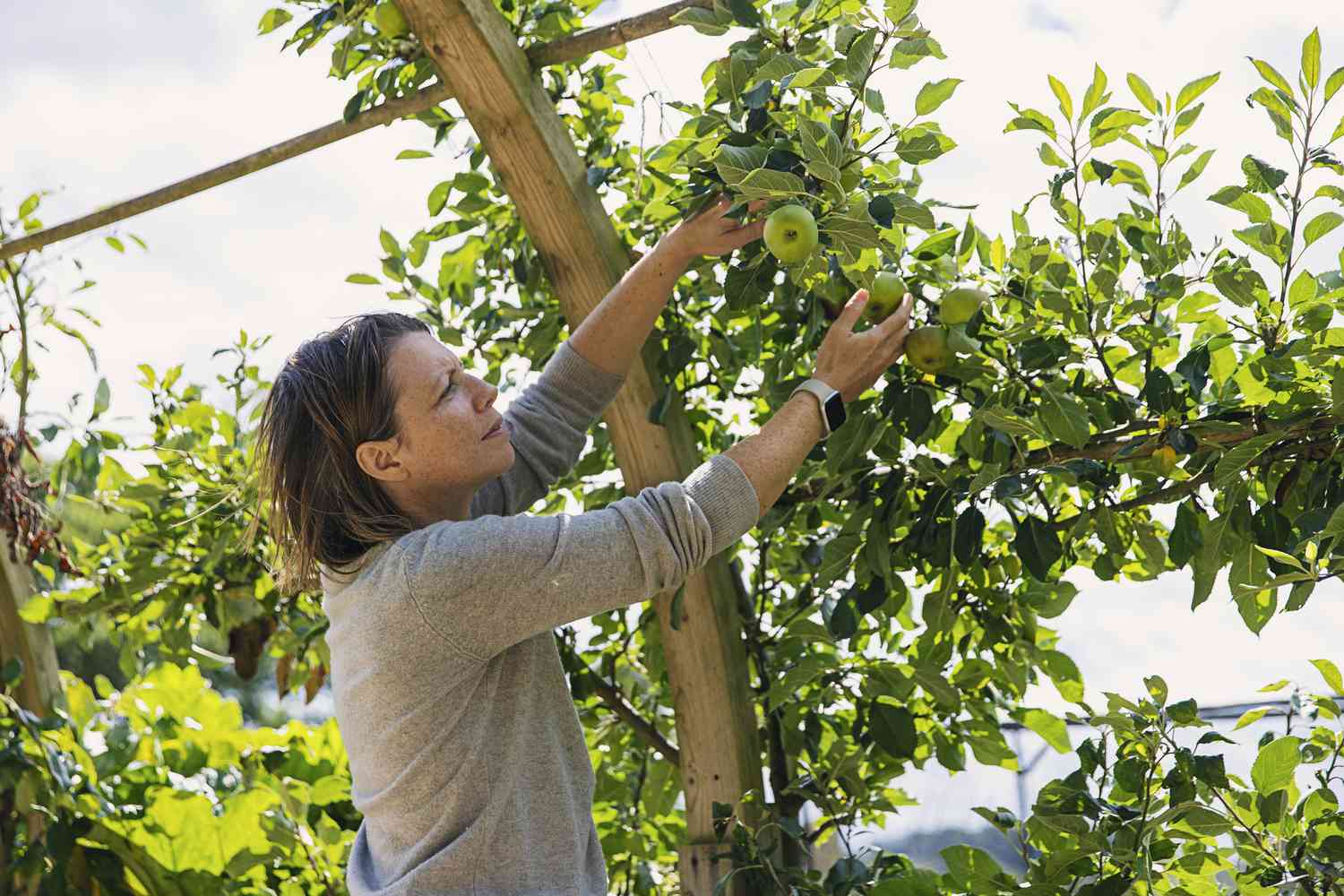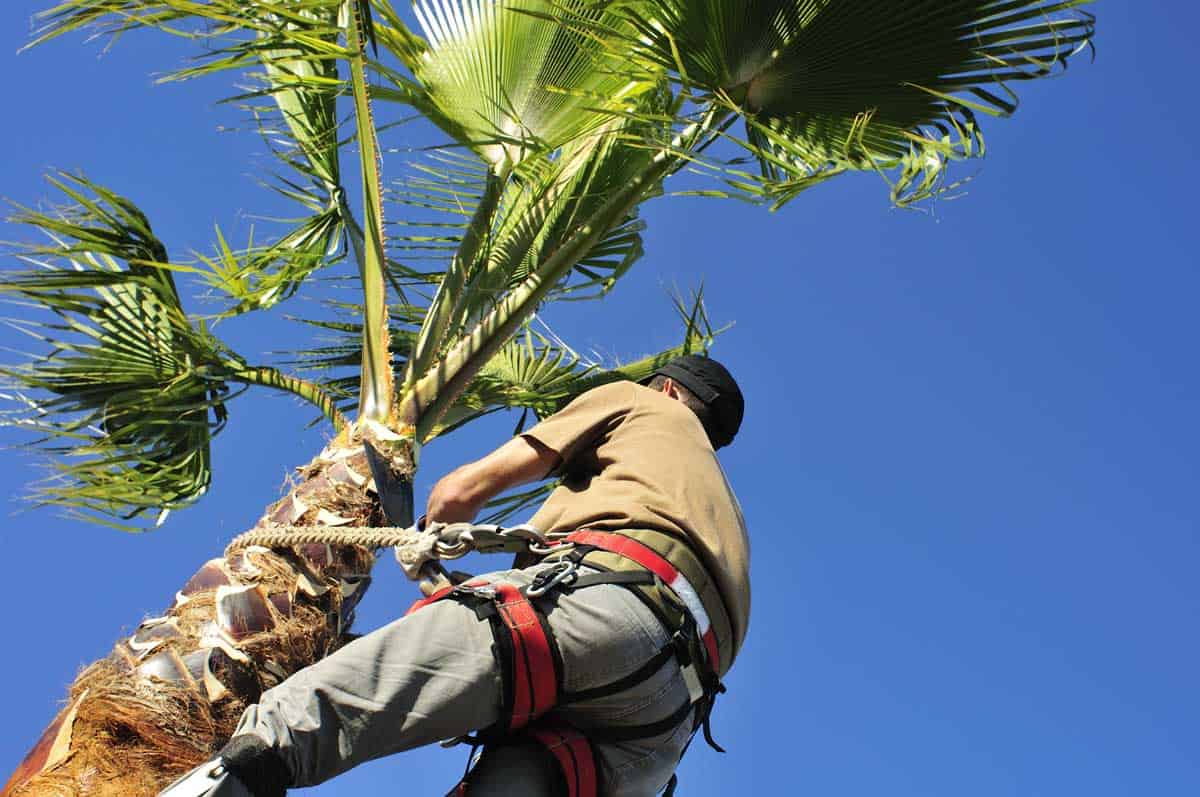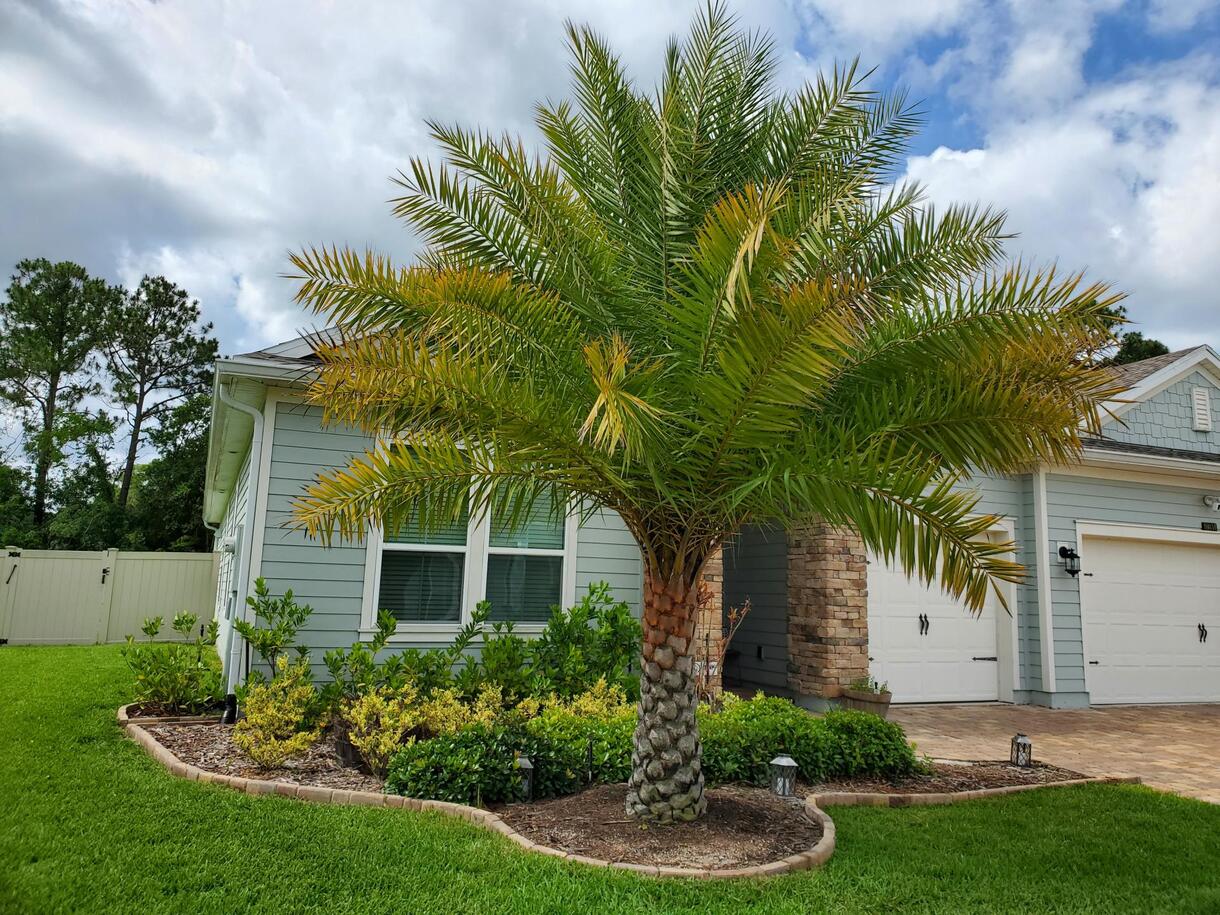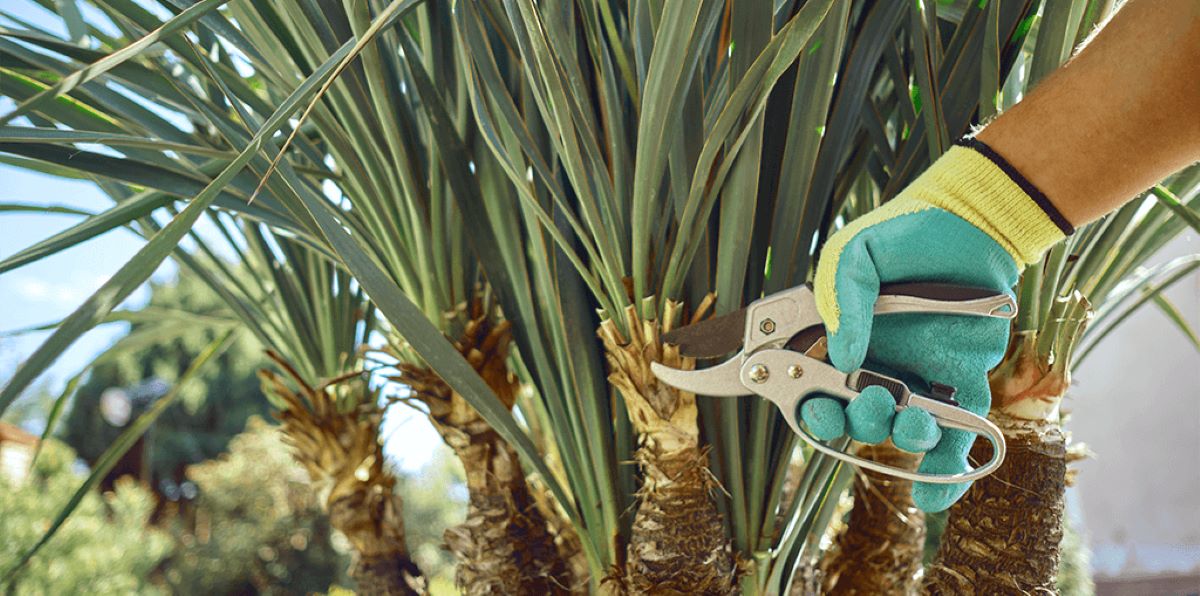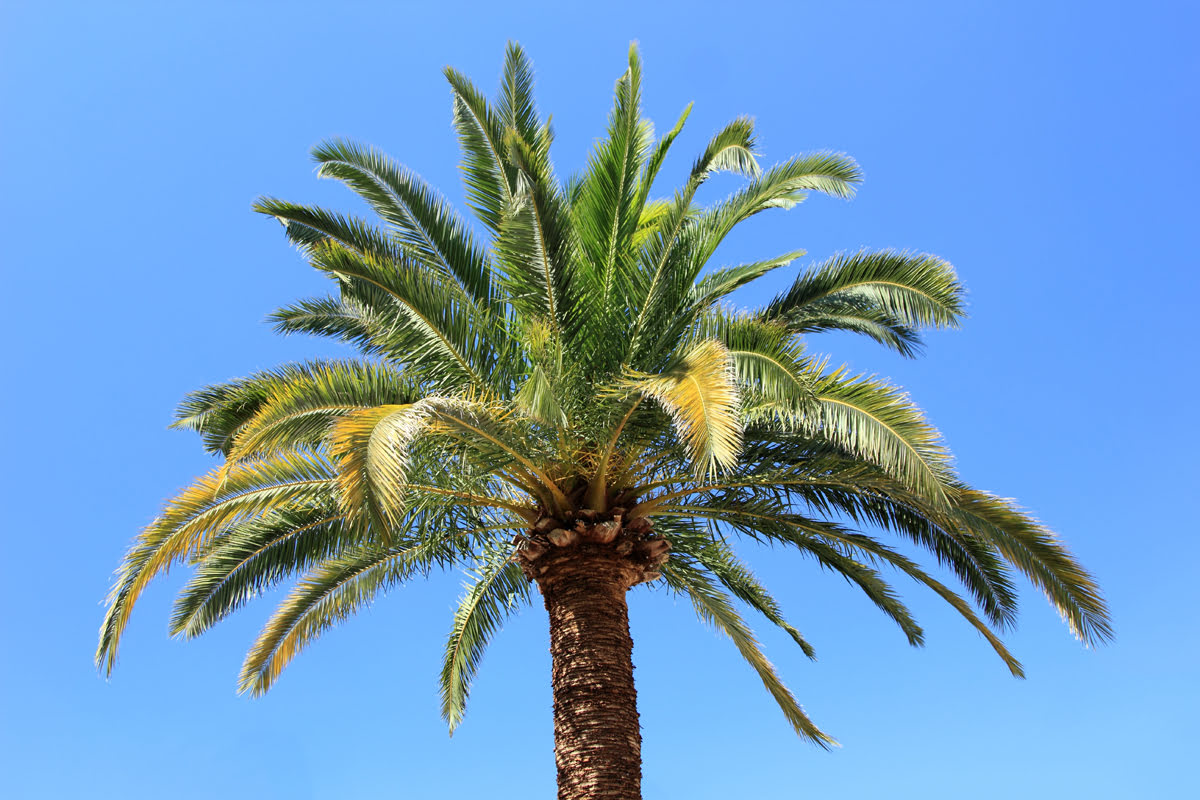Home>Gardening Techniques>Plant Care>How To Care For Palm Trees


Plant Care
How To Care For Palm Trees
Modified: February 6, 2024
Learn the essential plant care tips for palm trees to ensure they thrive in your garden. Discover how to properly water, fertilize, and provide adequate sunlight for your palm trees.
(Many of the links in this article redirect to a specific reviewed product. Your purchase of these products through affiliate links helps to generate commission for Chicagolandgardening.com, at no extra cost. Learn more)
Table of Contents
Introduction
Are you a proud owner of a majestic palm tree or considering adding one to your garden or indoor space? Congratulations! Palm trees are not only beautiful and iconic, but they also bring a touch of tropical flair to any landscape or interior design. However, like any plant, palm trees require proper care to thrive and stay healthy.
Whether you are a novice gardener or an experienced plant enthusiast, this comprehensive guide will provide you with all the information you need to care for your palm trees. From selecting the right palm tree for your specific environment to understanding their water and fertilizer requirements, pruning techniques, and protection against pests and diseases, we’ve got you covered.
Palm trees, with their unique characteristics and growth patterns, require specialized care. By following our expert advice, you’ll be able to create the ideal conditions for your palm trees to flourish, ensuring that they remain vibrant, lush, and disease-free for years to come.
So, let’s dive in and learn how to properly care for our palm trees to create a stunning tropical oasis in our own backyards or indoor spaces.
Choosing the Right Palm Tree
When it comes to selecting a palm tree, it’s important to keep in mind the unique needs and characteristics of different varieties. Before making a purchase, consider factors such as climate, available space, and desired aesthetic appeal.
First, determine the climate zone in which you reside. Some palm tree species thrive in tropical climates, while others are more suited to subtropical or even temperate regions. Knowing your climate zone will help you choose a palm tree that can withstand the environmental conditions in your area.
Next, consider the available space in your garden or indoor area. Palm trees come in a range of sizes, from small varieties suitable for pots and containers, to towering giants that require ample space to spread their fronds. Be sure to choose a palm species that fits well within your available space without overcrowding or obstructing other plants or structures.
Additionally, think about the desired aesthetic appeal of your palm tree. Are you looking for a fan palm with graceful, arching fronds, or do you prefer a feather palm with feathery, drooping foliage? Some palm trees also produce beautiful flowers or edible fruits, so consider these factors when making your decision.
Another essential consideration is the maintenance requirements of different palm tree species. Some palm trees are relatively low-maintenance, while others need regular pruning, fertilizing, or protection from certain pests and diseases. Assess your time availability and willingness to invest in maintaining your palm tree before selecting a variety.
Lastly, do some research or consult with a local plant expert to ensure that the palm tree you choose is suitable for your specific area. Factors such as soil type, exposure to wind or saltwater, and average rainfall can impact the health and growth of your palm tree. By choosing a palm tree that is well-adapted to your local environment, you increase its chances of thriving and looking its best.
By taking these factors into account, you can select the perfect palm tree that will not only complement your space but also thrive in your specific climate and growing conditions.
Planting a Palm Tree
Planting a palm tree may seem intimidating, but with proper preparation and technique, it can be a simple and rewarding process. Here are the steps to follow when planting your palm tree:
1. Choose the right location: Select a spot that provides adequate sunlight and sufficient space for the palm tree to grow. Consider factors such as proximity to other plants or structures and ensure that the soil is well-draining.
2. Dig the hole: Dig a hole that is wider and slightly shallower than the root ball of the palm tree. This will allow the roots to spread comfortably. Ensure that the hole is deep enough to accommodate the entire root system without crowding.
3. Prepare the soil: If the soil in your chosen location is heavy or clayey, consider adding organic matter or sand to improve drainage. Mix it well with the existing soil to create a looser, more nutrient-rich planting bed.
4. Remove the palm tree from its container: Gently tap the sides and bottom of the container to loosen the root ball. Carefully remove the palm tree, taking care not to damage the roots.
5. Position the palm tree: Place the palm tree in the center of the planting hole, ensuring that it sits at the same depth as it was in the container. Use a level to ensure that the tree is straight and upright.
6. Backfill the hole: Gradually backfill the hole with the soil mixture, gently pressing it down to eliminate any air pockets. Avoid compacting the soil too tightly, as this can hinder root growth and water penetration.
7. Water thoroughly: After planting, give the palm tree a deep watering to settle the soil and ensure good root-to-soil contact. Continue to water regularly, especially during the establishment period.
8. Mulch around the base: Apply a layer of organic mulch, such as wood chips or shredded bark, around the base of the palm tree. This will help retain moisture, regulate soil temperature, and suppress weed growth.
9. Stake if necessary: If your palm tree is top-heavy or prone to being knocked over by wind, consider staking it for support. Use soft ties or straps to secure the tree to the stakes, being careful not to damage the trunk.
By following these guidelines, you can ensure that your newly planted palm tree gets off to a healthy start and establishes itself successfully in its new environment.
Watering Requirements
Proper watering is crucial for the health and vitality of palm trees. While different palm species have varying water requirements, there are general guidelines to follow when it comes to watering your palm tree:
1. Establish a watering schedule: In the early stages of growth, palm trees require regular watering to establish a strong root system. Water deeply and thoroughly, allowing the water to penetrate the soil deeply. As the palm tree matures, adjust the watering frequency based on its specific needs and the surrounding environmental conditions.
2. Monitor soil moisture: Check the moisture levels in the soil before watering. Insert a finger or a moisture meter into the soil to gauge how dry or moist it is. Avoid overwatering, as it can lead to root rot and other fungal diseases. On the other hand, under-watering can cause the palm tree to become dehydrated and stressed.
3. Consider the climate: Palm trees in humid or rainy regions may require less frequent watering compared to those in arid or dry areas. Take into account the natural rainfall patterns and adjust your watering schedule accordingly. During periods of drought or hot weather, increase the frequency of watering to ensure that the palm tree receives enough moisture.
4. Watering methods: When watering, aim to saturate the root zone of the palm tree. Avoid watering the foliage excessively, as this can promote the growth of fungal diseases. Use a soaker hose, drip irrigation, or a watering can with a long spout to deliver water directly to the base of the palm tree, allowing it to penetrate the soil deeply.
5. Mulch to retain moisture: Apply a layer of mulch around the base of the palm tree to help retain moisture in the soil. This will reduce water evaporation and keep the root zone cooler during hot weather. Be careful not to pile the mulch against the trunk, as this can create a favorable environment for pests and diseases.
6. Adjust for seasonal changes: Palm trees may have different water requirements during different seasons. In the cooler months, when the palm tree is in its dormant phase, reduce the frequency of watering. However, continue to monitor soil moisture levels and provide supplemental watering if the soil becomes overly dry.
Remember, the key to successful watering is to strike a balance. Provide enough water to keep the palm tree hydrated without causing waterlogged conditions. By understanding the specific watering needs of your palm tree and adapting your watering practices accordingly, you can ensure its healthy growth and vitality.
Fertilizing Palm Trees
Fertilizing is an essential aspect of palm tree care as it provides the necessary nutrients for healthy growth and development. While palm trees are relatively low-maintenance when it comes to fertilization, there are a few important guidelines to follow:
1. Choose the right fertilizer: Select a high-quality palm tree fertilizer that is specifically formulated for palm trees. Look for a fertilizer with a balanced ratio of essential nutrients, including nitrogen (N), phosphorus (P), and potassium (K), as well as micronutrients such as iron and magnesium.
2. Consider the palm tree’s age: The fertilization requirements of palm trees vary depending on their age. Young palm trees will benefit from a slow-release or controlled-release fertilizer that provides a continuous supply of nutrients over an extended period. Mature palm trees can be fertilized with a well-balanced palm tree fertilizer two to three times a year.
3. Follow the recommended application rates: Read and follow the instructions on the fertilizer packaging for the proper application rates. Over-fertilization can be detrimental to palm trees and may lead to nutrient imbalances or even burn the roots. Under-fertilization, on the other hand, can result in stunted growth and nutrient deficiencies.
4. Apply fertilizer evenly: Spread the fertilizer evenly around the base of the palm tree, avoiding contact with the trunk. Make sure to cover the entire root zone, which extends beyond the canopy of the palm tree. Water the fertilizer into the soil thoroughly to help facilitate nutrient absorption.
5. Supplement with micronutrients: In addition to the main N-P-K nutrients, palm trees often benefit from supplemental applications of micronutrients. These micronutrients, such as iron, magnesium, manganese, and zinc, are essential for healthy palm tree growth and can be applied as foliar sprays or incorporated into the soil.
6. Adjust for environmental factors: Consider environmental factors that may affect the nutrient requirements of your palm tree. For example, if your palm tree is growing in sandy soil, more frequent fertilization may be necessary as sand leaches nutrients quickly. Similarly, palm trees growing in containers may require more frequent fertilization due to limited nutrient availability.
7. Monitor nutrient deficiencies: Keep an eye out for signs of nutrient deficiencies, such as yellowing or browning fronds, stunted growth, or leaf discoloration. If you notice any such symptoms, consider adjusting your fertilization regimen or consulting a professional to diagnose and address the specific nutrient deficiency.
Remember, moderation is key when it comes to fertilizing palm trees. Excessive fertilization can lead to nutrient imbalances, while inadequate fertilization can result in poor growth. By following the appropriate fertilization guidelines and monitoring the health of your palm tree, you can ensure that it receives the necessary nutrients for optimal growth and beauty.
Pruning and Trimming
Pruning and trimming are essential maintenance practices for palm trees, promoting their overall health, appearance, and safety. Here are some important tips to keep in mind when pruning and trimming your palm trees:
1. Remove dead or damaged fronds: Regularly inspect your palm tree for any dead or damaged fronds. These fronds can be removed by cutting them close to the trunk using clean, sharp pruning shears. Removing dead fronds not only improves the tree’s appearance but also prevents potential hazards from falling fronds.
2. Avoid over-pruning: While it’s important to remove dead or unsightly fronds, avoid excessive pruning that may harm the palm tree. Palm trees rely on their fronds for photosynthesis and overall vitality. Only remove fronds that are fully brown or damaged beyond recovery.
3. Prune fruit stalks if desired: Some palm species produce fruit stalks that can be visually appealing but may also attract pests or become a maintenance nuisance. If you prefer to remove the fruit stalks, wait until they are dead or fully mature before cutting them back to the trunk.
4. Trim lower fronds with caution: It’s generally not recommended to remove healthy lower fronds unless they obstruct walkways or obstruct visibility. Cutting off lower fronds can lead to a “hurricane cut” appearance and compromise the tree’s natural shape and health.
5. Sterilize pruning tools: Before pruning, make sure to sterilize your pruning tools with rubbing alcohol or a mixture of bleach and water. This helps prevent the spread of diseases or pests between palm trees.
6. Timing matters: The best time to prune palm trees is during the warm months when they are actively growing. Pruning during this period allows the tree to recover quickly. Avoid pruning in cooler months as it can slow down the healing process.
7. Consider professional help: If you are uncertain about how to properly prune your palm tree or if the tree is tall and requires specialized equipment, consider hiring a professional arborist or tree service to handle the job safely and effectively.
In addition to regular pruning, it’s important to practice preventive maintenance by cleaning the trunk and removing debris from the tree’s crown. This helps prevent the buildup of pests or diseases that may damage the palm tree.
Proper pruning and trimming techniques not only enhance the aesthetic appeal of a palm tree but also contribute to its overall health and safety. By following these guidelines and taking a conservative approach to pruning, you can maintain the natural beauty and longevity of your palm trees.
Protecting Palm Trees from Pests and Diseases
Palm trees, like any other plants, are susceptible to various pests and diseases that can impact their health and appearance. However, with proper preventive measures and timely intervention, you can protect your palm trees and keep them thriving. Here are some essential tips for protecting your palm trees from pests and diseases:
1. Regular inspection: Regularly inspect your palm trees for signs of pests, such as scale insects, aphids, or spider mites. Look for visible damage, discolored fronds, or unusual growth patterns. Additionally, keep an eye out for symptoms of diseases, such as leaf spot or fungal infections.
2. Maintain a clean environment: Remove any dead leaves or debris from around the base of the palm tree. Eliminate breeding grounds for pests and prevent the spread of diseases by keeping the area clean and free from accumulated organic matter.
3. Provide proper watering: Overwatering can create moist conditions that attract pests and encourage fungal diseases. Avoid excessive watering and ensure that the palm tree’s root zone has proper drainage. Follow recommended watering practices to maintain healthy moisture levels in the soil.
4. Practice proper fertilization: Over-fertilization can weaken palm trees and make them more susceptible to pests and diseases. Follow the appropriate fertilization guidelines to provide the necessary nutrients without causing nutrient imbalances that can harm the tree.
5. Prune and trim correctly: Proper pruning techniques, as discussed in the previous section, can help prevent the spread of diseases. Removing dead or damaged fronds promptly can reduce the risk of pathogens entering the tree through open wounds.
6. Use pesticides judiciously: If necessary, use pesticides sparingly and selectively. Consult with a local arborist or horticultural expert to identify appropriate pest control options and ensure their safe and effective application. Always follow the instructions on the pesticide label and consider environmentally friendly alternatives, such as neem oil or insecticidal soaps, whenever possible.
7. Seek professional help when needed: If you notice persistent pest infestations or suspect a serious disease, don’t hesitate to seek professional assistance. Arborists or plant health experts can diagnose the problem accurately and provide appropriate treatments or management strategies.
Prevention is key when it comes to protecting palm trees from pests and diseases. By practicing good cultural practices, providing appropriate care, and staying vigilant, you can minimize the risk of infestations and maintain the health and beauty of your palm trees.
Providing Adequate Sunlight
Adequate sunlight is crucial for the growth and overall health of palm trees. Most palm species are sun-loving and thrive in bright, direct sunlight. Here are some important considerations for providing the right amount of sunlight for your palm trees:
1. Know the sunlight requirements of your palm tree: Different palm species have varying sunlight requirements. Some palms, such as the Queen Palm (Syagrus romanzoffiana), are more tolerant of partial shade, while others, including the Canary Island Date Palm (Phoenix canariensis), thrive in full sun. Research the specific needs of your palm tree to provide the appropriate amount of sunlight.
2. Observe the sun patterns in your landscape: Study the sun patterns in your garden or the area where you plan to plant the palm tree. Assess how the sunlight moves throughout the day. Determine if there are any structures, trees, or other obstacles that may shade the area and affect the amount of sunlight the palm tree receives.
3. Plant in the right location: Choose a planting location that provides the optimal amount of sunlight for your palm tree species. If a palm requires full sun, select an open area that receives direct sunlight for most of the day. If your palm tree prefers partial shade, consider a location with some protection from intense midday sun or afternoon heat, such as under a larger tree or on the eastern or western side of a building.
4. Avoid excess shading: Palm trees that are shaded excessively may struggle to thrive and may exhibit stunted growth, elongated stems, or pale foliage. Ensure that neighboring trees or structures do not cast long shadows over the palm tree throughout the day. Prune any nearby trees to allow more sunlight to reach the palm tree if needed.
5. Consider using shade cloth: In areas with intense sunlight or in regions with particularly hot summers, you can provide some shade to young or delicate palm trees by using shade cloth. This light-filtering material can be attached to stakes or placed above the palm tree to reduce the direct intensity of the sun’s rays.
6. Monitor the palm tree’s response: Pay attention to how your palm tree responds to the sunlight it receives. If the foliage appears scorched, turns yellow or brown, or if the palm tree seems stressed, it may be receiving too much direct sunlight. Conversely, if the palm tree’s growth is slow, the fronds are pale, or the tree looks leggy, it may be indicating a need for more sunlight.
7. Adjust as needed: If you notice any signs of sunlight-related issues, consider adjusting the palm tree’s exposure to sunlight. This may involve relocating the palm to a sunnier or shadier spot, pruning nearby obstacles, or providing temporary shade during the hottest part of the day. Consult with a horticulturist or arborist for guidance if you are unsure.
By ensuring that your palm trees receive the right balance of sunlight, you can promote healthy growth, vibrant foliage, and an overall thriving appearance.
Mulching Palm Trees
Mulching is an important practice that provides numerous benefits for palm trees. By applying a layer of mulch around the base of the tree, you can enhance soil quality, regulate soil temperature, conserve moisture, and suppress weed growth. Here are some key points to consider when mulching your palm trees:
1. Choose the right mulching material: Select a suitable organic mulch, such as wood chips, shredded bark, or compost. These materials slowly break down over time, adding nutrients to the soil. Avoid using mulches that may contain weed seeds or have sharp edges that can damage the palm tree trunk.
2. Apply an appropriate depth: Spread the mulch in a layer around the base of the palm tree, extending out to the drip line. Aim for a depth of 2-4 inches (5-10 cm) for young trees and 4-6 inches (10-15 cm) for mature trees. Be careful not to mound the mulch against the trunk, as this can create a favorable environment for pests and diseases.
3. Leave a gap around the trunk: Ensure that there is a small gap between the mulch and the base of the palm tree trunk. Maintaining this space helps prevent moisture buildup, which can lead to rot or fungal infections.
4. Mulch on a regular basis: Replenish the mulch periodically to maintain the desired depth and to compensate for decomposition. As the mulch decomposes, it improves soil structure, increases nutrient availability, and enhances moisture retention.
5. Watch for pests or mold: Regularly inspect the mulch for signs of pests, such as snails or insects, and remove them as needed. Additionally, monitor for any mold or fungal growth. If you notice any issues, adjust the mulch depth or consider switching to a different mulching material.
6. Weed control: A layer of mulch helps suppress weed growth, reducing competition for nutrients and water. However, it’s important to regularly monitor the mulched area and remove any emerging weeds to prevent them from spreading or competing with the palm tree.
7. Maintain a clean mulch bed: Keep the mulched area tidy by removing fallen leaves, debris, or other materials. A clean mulch bed not only enhances the aesthetic appeal but also prevents the accumulation of pests or diseases.
8. Adjust for climate: In regions with hot climates, consider using lighter-colored mulch to help reflect sunlight and regulate soil temperature. In cooler regions, a darker mulch can help absorb heat and maintain a more stable temperature around the palm tree.
Mulching is an effective and relatively low-maintenance practice that offers multiple benefits for palm trees. By following these guidelines, you can create a favorable environment around your palm trees, ensuring optimal growth, moisture retention, and overall health.
Cold Weather Precautions
Cold weather can pose a challenge for palm trees, particularly for those growing in regions with cooler climates. However, with proper preparation and precautions, you can help protect your palm trees from the potential damage caused by frost or freezing temperatures. Here are some important considerations to keep in mind:
1. Choose cold-hardy palm species: If you live in an area prone to cold weather, consider selecting palm tree species that are known to be cold-hardy. Some examples include the Windmill Palm (Trachycarpus fortunei) and the Needle Palm (Rhapidophyllum hystrix). These species have higher tolerance to cold temperatures and can withstand freezing conditions better than others.
2. Provide proper insulation: Before cold weather arrives, create a protective barrier around the palm tree. Wrap the trunk with burlap or frost cloth, covering it from the base to the first fronds. This insulation helps retain heat and provides an extra layer of protection against freezing temperatures.
3. Apply a layer of mulch: Prior to winter, apply a layer of mulch around the base of the palm tree. This helps insulate the soil, keeping the roots warmer during cold spells. Ensure the mulch is spread evenly and is at an appropriate depth to maximize its insulating effect.
4. Water adequately: Proper hydration is important for palm trees during cold weather. Water your palm tree thoroughly before the arrival of freezing temperatures. Moist soil retains heat better than dry soil and helps protect the roots from freezing. However, be cautious not to overwater, as excessively wet soil can lead to root rot.
5. Cover the fronds: In severe cold weather, you can protect the fronds of your palm tree by covering them with frost cloth or blankets. Secure the coverings in place to prevent them from blowing away in strong winds. This additional layer of protection can help shield the fronds from frost damage.
6. Provide temporary heat sources: In extreme cold conditions, consider using temporary heat sources, such as outdoor heating lamps or string lights, to provide extra warmth to the palm tree. Place these heat sources strategically around the tree, ensuring they do not come into direct contact with the foliage or any flammable materials.
7. Monitor weather conditions: Stay updated on weather forecasts and be prepared to take action when freezing temperatures are expected. Monitor the palm tree regularly during cold periods for signs of frost or damage. Promptly remove any ice or snow accumulation on the fronds to prevent additional stress or breakage.
Remember that while these precautions help protect palm trees from cold weather, extreme temperatures or prolonged freezing conditions can still cause damage. If your palm tree does experience significant damage from cold weather, consult with a professional arborist or horticulturist to assess the extent of the damage and determine the best course of action.
By implementing these cold weather precautions, you can increase the chances of your palm tree surviving the winter and thriving once warmer temperatures return.
Palm Tree Transplanting Tips
Transplanting a palm tree can be an exciting but challenging endeavor. Whether you are moving a palm tree within your garden or relocating it to a new location, proper transplanting techniques are essential for the tree’s success and survival. Here are some tips to ensure a successful palm tree transplant:
1. Choose the right time: The ideal time to transplant a palm tree is during its dormant period, which is typically in late winter or early spring. Transplanting during this time allows the palm tree to recover and establish its root system before the onset of the growing season.
2. Prepare the new planting hole: Dig a new hole at the new location that is wider and deeper than the palm tree’s root ball. Ensure that the hole is large enough to accommodate the entire root system without crowding or bending the roots.
3. Carefully remove the palm tree: Begin by pruning any damaged or dead fronds from the palm tree. Next, using a sharp shovel, dig around the tree’s root ball, creating a trench. Gently and slowly slide the palm tree out of the ground, taking care not to damage the roots.
4. Preserve the root ball: When lifting the palm tree, aim to keep the root ball intact. Reassure that the majority of the root system remains intact to facilitate the tree’s successful transplant.
5. Transfer the palm tree: Once the palm tree is out of the ground, transfer it to the new planting hole immediately. It’s important to minimize the time the tree spends out of the ground to prevent the roots from drying out.
6. Position and backfill: Carefully place the palm tree into the new hole, ensuring that it sits at the same depth as it was in its previous location. Backfill the hole with soil, gently packing it around the roots to eliminate any air pockets. Avoid compacting the soil too tightly, as this can impede root growth and water penetration.
7. Water and mulch: After transplanting, water the palm tree thoroughly to settle the soil and provide hydration to the roots. Apply a layer of mulch around the base of the tree to help retain moisture and regulate soil temperature. Avoid piling the mulch against the trunk.
8. Provide extra care: Transplanted palm trees may require extra care and attention during their establishment period. Monitor soil moisture levels and provide adequate watering to promote root growth. Protect the tree from strong winds or extreme weather conditions, and avoid pruning or stressing the tree during this sensitive phase.
9. Be patient: Transplanted palm trees may experience some shock and temporary setbacks. It’s important to be patient and give the tree time to acclimate to its new environment. With proper care and time, the palm tree should recover and resume healthy growth.
Remember that transplanting large or mature palm trees may require professional assistance due to their size and weight. Consulting with an arborist or tree care expert can ensure a smooth and successful transplanting process.
By following these palm tree transplanting tips, you can increase the chances of a successful transfer and give your palm tree the best opportunity to thrive in its new location.
Conclusion
Caring for palm trees requires a combination of knowledge, diligence, and a bit of TLC. By following the guidelines and tips outlined in this comprehensive guide, you can ensure that your palm trees not only survive but thrive in their environments.
From the initial selection of the right palm tree for your specific location to providing adequate sunlight, water, and nutrients, each aspect of care plays a crucial role in the health and beauty of your palm trees. Pruning and trimming help maintain their shape and safety, while protecting against pests and diseases is essential to keep them vibrant and robust.
Understanding how to properly plant a palm tree and providing the right amount of mulch, while also considering cold weather precautions and transplanting techniques, ensures the long-term success of your palm trees.
Remember that each palm tree is unique, with its own specific requirements and characteristics. It’s important to stay observant, monitor the health of your palm trees regularly, and make adjustments as needed. Consulting with local arborists or horticulturists can provide valuable insights and tailored advice based on your specific region and climate.
By dedicating the time and effort to care for your palm trees, you will be rewarded with their majestic beauty, tropical charm, and a touch of paradise in your surroundings.

